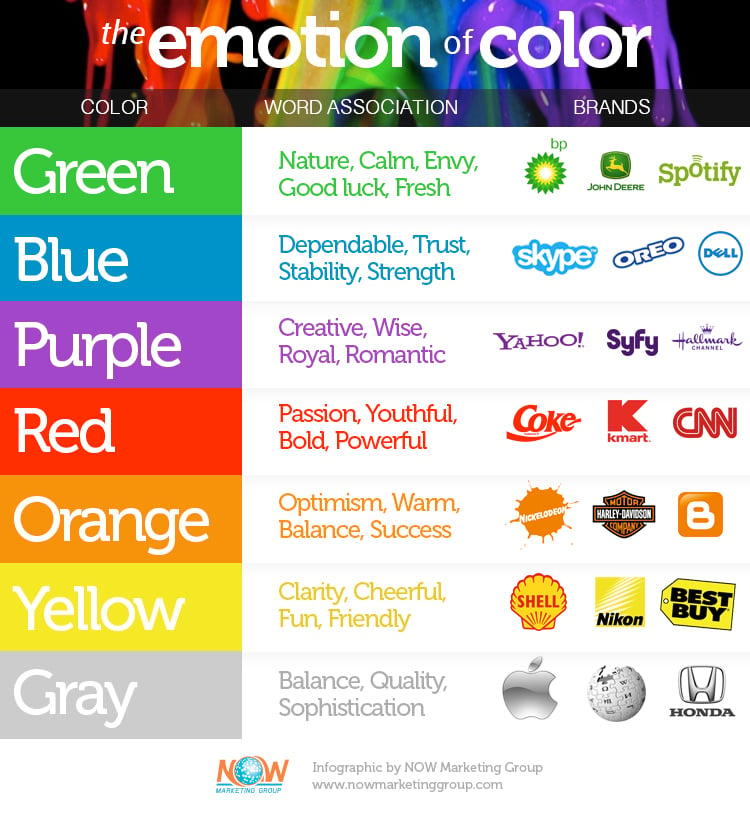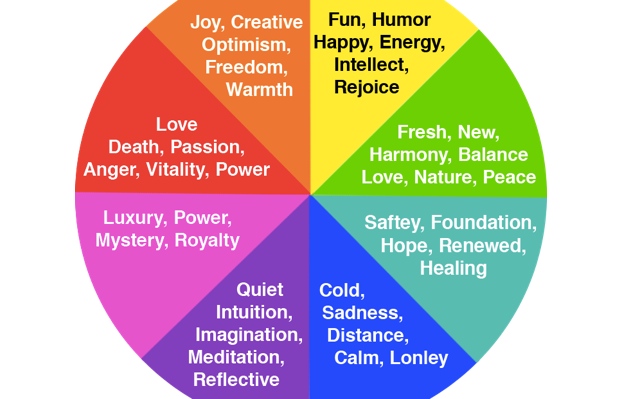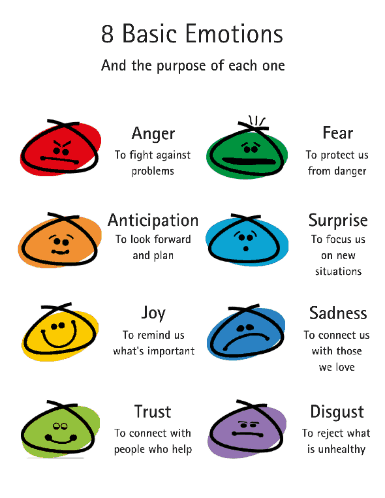

Participants were asked to study the lists and then to recall all of the words they remembered.

Nine of the colored words were negative in valence, nine were positive in valence, and nine were neutral. The remaining three lists contained 12 words, all presented in black ink.
#COLORS AND EMOTIONS SERIES#
Twenty-seven of those lists contained a series of 12 words, 11 appearing in black ink and one appearing in red, green, or blue ink. Kuhbandner and Pekrun ( 2013) presented participants with 30 lists of words. Red did not enhance the identification of fear, indicating that red is specific to threat and not associated with negative emotion in general.Ĭolor has also been shown to influence the emotional memory enhancement effect: better recall and recognition of emotional than of neutral stimuli. Their results revealed that red enhanced the identification of angry faces in both Experiments 1 and 2. 2) after viewing a fixation cross that was replaced by a red, green (Exp. Participants were asked to categorize faces displaying happiness and anger (Exp. Young, Elliot, Feltman, and Ambady ( 2013) examined the ability of the color red to influence the identification of negative facial expressions, specifically anger and fear. ( 2009) found that the color red is positively associated with negative words, as well as with words specific to failure. Recently, researchers have investigated the relationship between the color red and its ability to influence behavior. For example, the color red generally conveys information regarding threat (e.g., alarms Travis, 1991) and failure, particularly in achievement settings (e.g., the red ink used by teachers to correct mistakes Moller, Elliot, & Maier, 2009). When the color of the stimulus (e.g., white) matches the valence of the stimulus (e.g., positive), individuals are able to perceive and categorize the stimulus more efficiently.Ĭolors are often used to signify information in our environment.

The hue of a stimulus is also processed at a very early stage of perception (Gegenfurtner & Kiper, 2003). Research has consistently shown that stimulus valence is processed quickly and automatically (e.g., Baddeley, 1972 Vuilleumier, 2005). These results support the existence of an association between brightness and valence, and this association seems to automatically influence response times. The results revealed that participants were faster to categorize the positive words when they appeared in white than when they appeared in black, and the opposite was true for the negative words. In addition, the words were presented in black and white. Half of the words were positive in valence, and the other half were negative. In a series of studies, participants were asked to decide whether a word presented was negative or positive. Meier, Robinson, and Clore ( 2004) found that we tend to infer the valence of a stimulus (good or bad) on the basis of brightness. For example, when participants are asked to associate an emotional response with a color, they often associate bright colors (e.g., white, pink) with positive emotions (e.g., happy, relaxed) and dark colors (e.g., black, brown) with negative emotions (anxious, sad) (Hemphill, 1996).

Research has indicated that individuals often associate colors with various emotional terms. The present work provides researchers with a large database to aid in stimulus construction and selection. The results revealed that the color RED was most commonly associated with negative emotion and emotion-laden words, whereas YELLOW and WHITE were associated with positive emotion and emotion-laden words, respectively. Participants were asked to provide the first color that came to mind for a set of 160 emotional items. The purpose of the present study was to construct norms for positive and negative emotion and emotion-laden words and their color associations. In addition, words such as anger and failure seem to be inherently associated with the color red (e.g., Kuhbandner & Pekrun). Researchers have started to examine the relationship between emotional words and colors, and the findings have revealed that brightness is often associated with positive emotional words and darkness with negative emotional words (e.g., Meier, Robinson, & Clore, Psychological Science, 15, 82-87, 2004). Color has the ability to influence a variety of human behaviors, such as object recognition, the identification of facial expressions, and the ability to categorize stimuli as positive or negative.


 0 kommentar(er)
0 kommentar(er)
